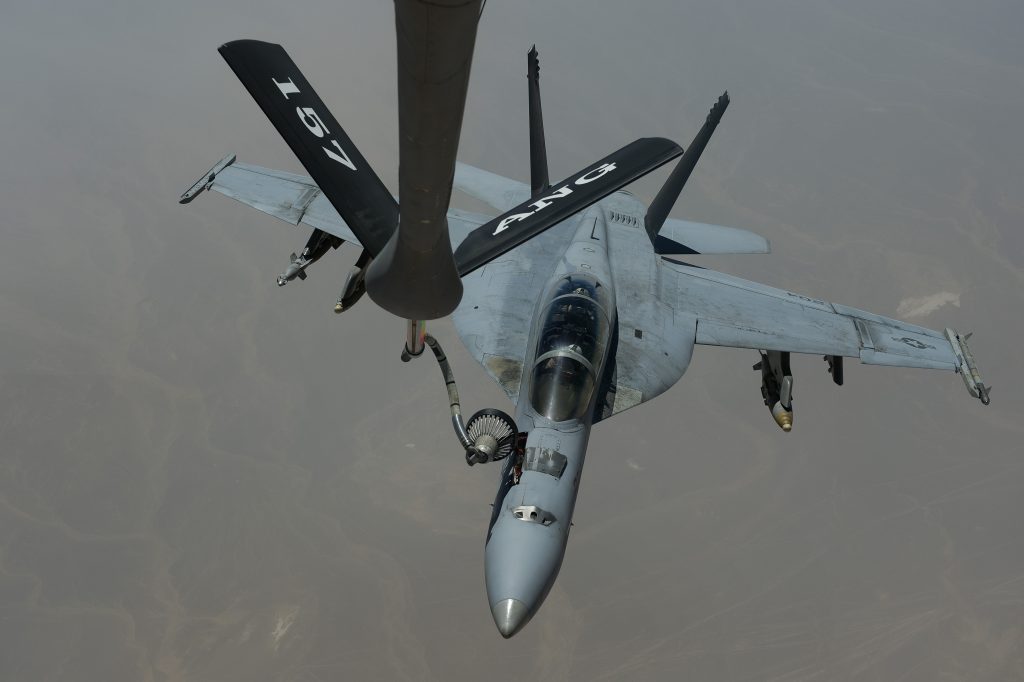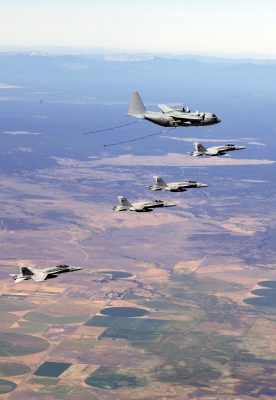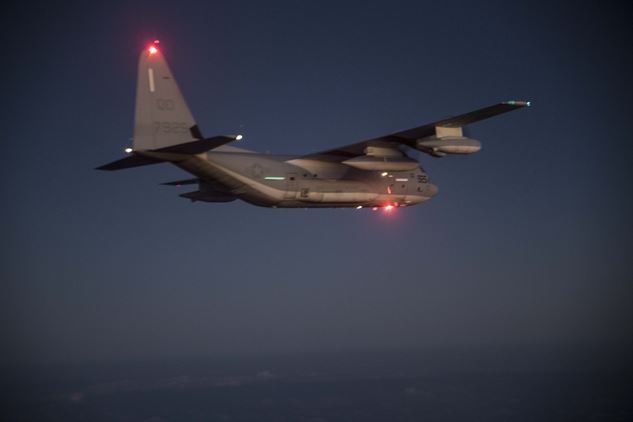
A KC-130 refueling F-18s off the coast of Japan last Thursday crashed. Here is an initial analysis of the aircraft and the possible causes.
The F/A-18 Hornet
McDonnell Douglas in conjunction with Northrup developed The F/A-18 as a Navy and Marine Corps fighter in the mid-1970s. In a competition for the selection of the next lightweight military fighter, the F-18 and the F-16 battled it out. Secretary of Defense James Schlesinger and the Pentagon selected the F-16 as the winner in 1975. It was slated for use by the Army, Air Force, and Marines. General Dynamics, who developed the F-16, was ecstatic over the huge contract and the revenue it would generate.

McDonnell Douglas, who developed the F-18, cried foul (facing a major blow to their business). The persuaded Congressmen from the districts around their plants and headquarters to fight against the decision. The Congressmen cited “national defense concerns” over the selection. Whether it was truly a matter of national defense is debatable as the F-16 is a very potent aircraft. Coupled with the fact that the F-16 only had one engine (the Navy prefers two engines over water and the F-18 had two), Congress eventually awarded the F-16 to the Air Force and the F-18 to the Navy and Marines Corps.
Since the 1970s the F-18 has gone through several revisions The F/A-18 flying now can do both the fighter (F) role and the attack (A) against ships and ground troops roll, hence the F/A designation. The aircraft carries a pilot and in the Navy F/A-18F and the Marine Corps F/A-18D models as well as a Weapons System Operator (WSO).
The KC-130

The KC-130 developed by Lockheed joins it more notable refueling sisters, the Boeing KC-135, the McDonnell Douglas KC-10 and the new Boeing KC-46 aircraft to provide refueling for military aircraft.
The Marine Corps has been used a version of the KC-130 for refueling since the early 1960s. Models include the KC-130F, KC-130R, and KC130T. The most recent version is the KC-130J. Its first operational deployment was in 2005 and there are just over 50 in service. One of the most effective features is the KC-130’s ability to refuel helicopter and propeller aircraft, as well as jet aircraft. This versatility has made it the darling the Marine Corps as the J model can handle most of the Marine Corps’ refueling needs.

The KC-130 refuels Marine Crops aircraft through a basket like device known as a drogue.
The Crash
So what happened on December 6th, 2018 at approximately 2:00am? An F/A-18 stationed in Iwakuni in Japan was participating in a routine training mission. One segment of the Hornet’s mission was to refuel on a KC-130J. Somehow, there was a mid-air collision. The cause is unknown.
As a KC-135 refueling pilot for nearly a decade I speculate that there are three likely reasons. I want to emphasize that this is conjecture based on many years of experience. Until the surviving crewmember is interviewed, we likely will never know for sure (military aircraft often do not carry “black boxes”).

Scenario 1: The F/A-18 Hornet rendezvoused too aggressively with the KC-130J causing a mid-air collision. One of the primary human senses relied on for air refueling is depth perception. The ability to ascertain depth is severely hampered at night. We rely on the rods and cones in our retina and use a variety of visual cues in order to determine depth and closure rate. Many of these cues degrade in dark night. If there were little moonlight, the Hornet would only have a few lights on various portions of the KC-130 to determine depth.
Scenario 2: The Hornet makes a normal rendezvous with the KC-130J, but during refueling fatigue and quiet cause a pilot to “nod off” just for a few moments. Those precious seconds can cause the Hornet to creep closer to the KC-130J. When the startled pilot awakes, he again has limited depth perception in order to make corrections.
Scenario 3: A mechanical malfunction and/or turbulence causes a midair collision. If a Hornet pilot was on the drogue (the refueling tube) and the KC-130J suddenly “threw a prop” or had some kind of catastrophic engine failure, the explosion could lead to closure and collision.
What’s Next
Again, all the above is conjecture. The Trump administration has increased training dollars since taking office. As a result, these pilots were likely highly trained and current. The three scenarios listed above are three possibilities, but there are others.
So far, only the WSO has been recovered from the crash and is likely the only survivor. Unless, and until, he can give more clues, this crash will likely remain a mystery. For now, we pray for the families of the victims.
For an excellent series of pictures of night time Air Refueling by the unit at Iwakuni Japan, see this link: https://www.mcasiwakuni.marines.mil/News/News-Stories/News-Article-Display/Article/1355397/sumos-conduct-aerial-refueling-training-with-thunderbolts-green-knights/
